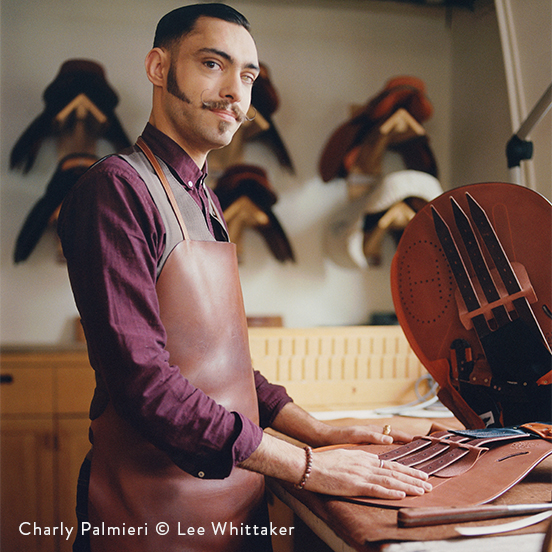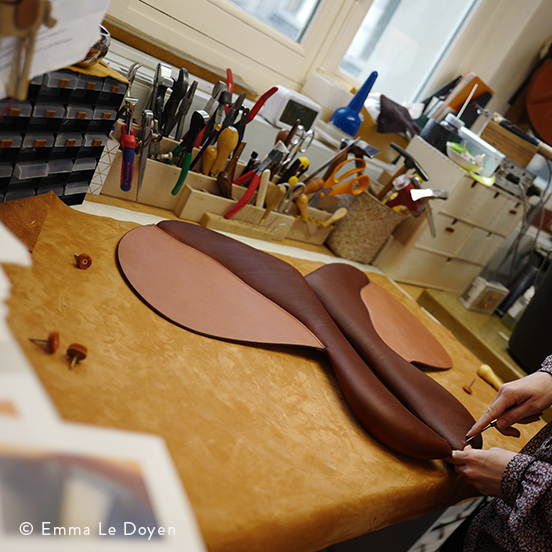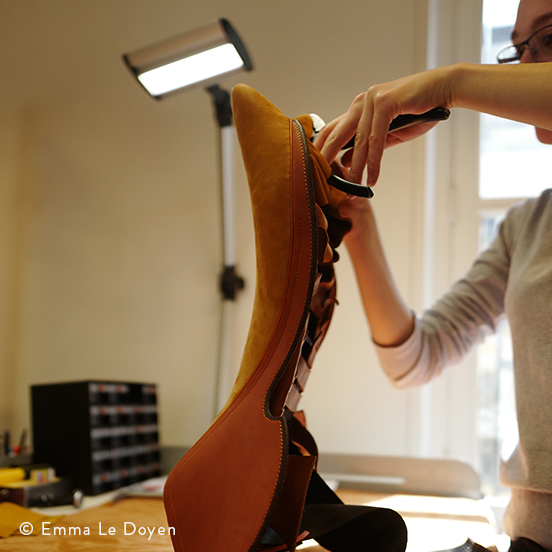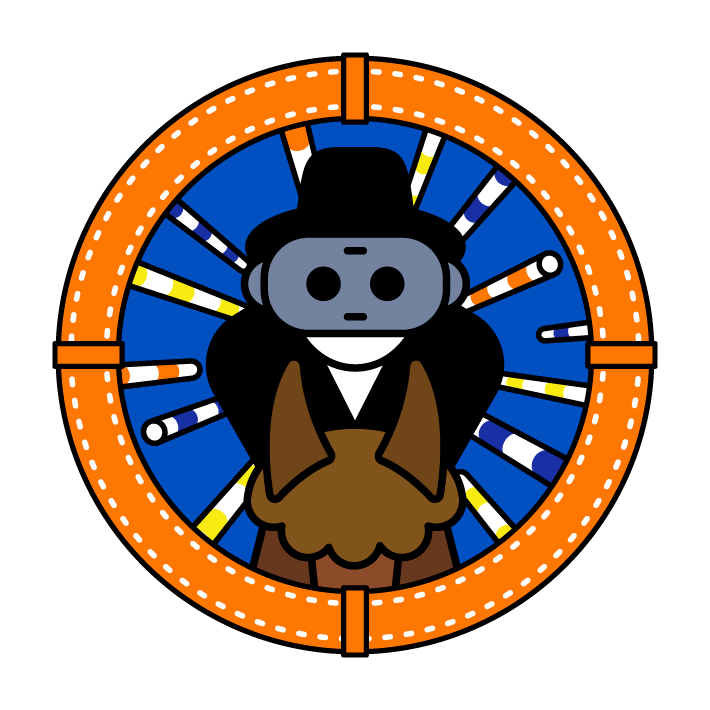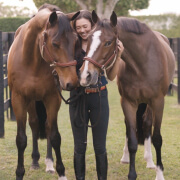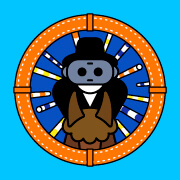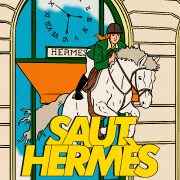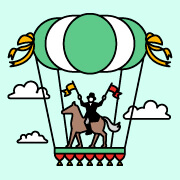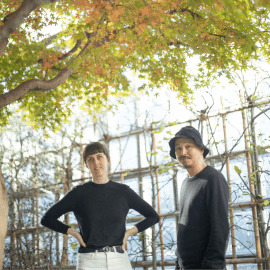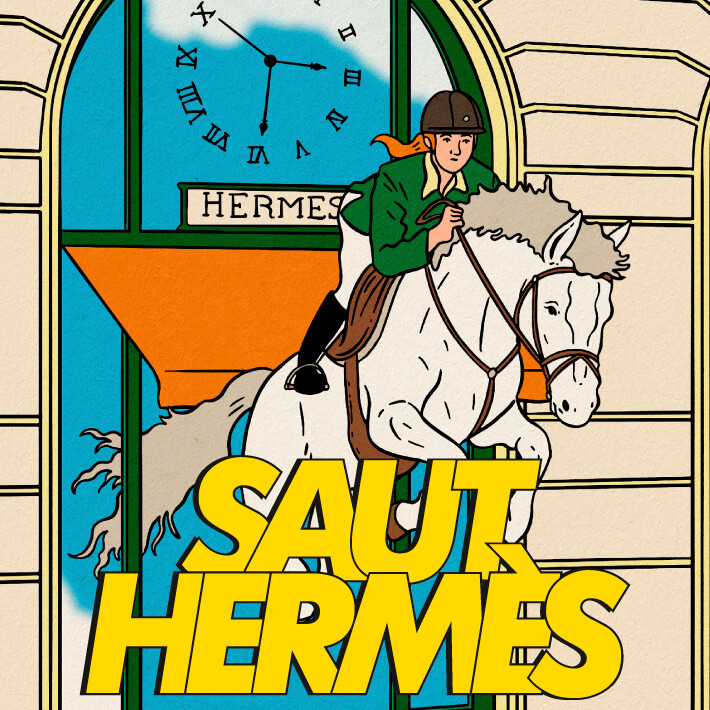
SPECIAL CONTENTS
Saut Hermès:
The pinnacle of competition
Friday, 15 March – Sunday, 17 March 2024
Saut Hermès 2024 will be held at Paris’s Grand Palais Éphémère between 15th and 17th March. “Saut” is the French word for “jump”, reflecting the competition’s focus on showjumping. For three days, the best of the best in the equestrian world will compete in one of the sport’s most dynamic and sensational events. If you’re new to showjumping, here are five things to watch for at Saut Hermès.
2024 Saut Hermès
2024 Saut Hermès
2024 Saut Hermès
2024 Saut Hermès
Saut Hermès evokes memories of the equestrian competitions that were once held in the heart of Paris. The audience is unlikely to forget the experience of seeing these incredible horses up close.


Fighting for every centimetre
There are two main types of obstacles in showjumping: verticals, which are simple poles set at a certain height, and the wider oxers, with two sets of spaced-apart poles. The obstacles in the 70-by-30-metre arena are set at different distances depending on the course design of the day, with the full picture revealed a mere 15 minutes before the start of competition. Riders use that time to assess the course and plan their approach.

They then compete to achieve the highest overall score, which is based on jump height as well as speed and stride length. With fences placed at tricky angles and awkward distances, such as five and a half strides, the course is made to challenge the horses, making the mental acumen of both horse and rider a key element of the competition.
It is a CSI 5* event—the highest level recognized by the French Equestrian Federation and the International Federation for Equestrian Sports. This means the course at Saut Hermès features a succession of obstacles up to 160 centimetres high. Japan has never hosted a competition at this level, in which horses leap over fences as tall as a person while traversing a course at breakneck speed with a dynamism and power that is seen only at the highest levels of international competition. You can even hear the horses breathing.
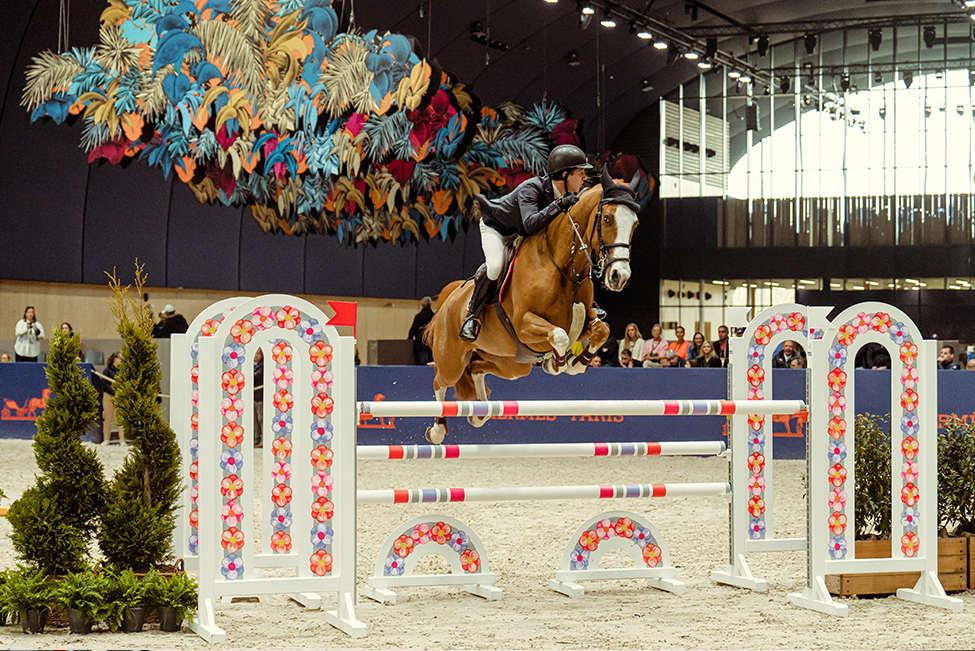

Teamwork
The horses and their riders are not the only ones preparing for Saut Hermès. Entire teams—trainers to support the riders, grooms to care for the horses, saddle makers, veterinarians, and farriers to shoe the horses—come together to face this challenge.
Meanwhile, the course designer is responsible for transforming the arena into an exciting stage for a competition. Together with the obstacle production team and the lighting technicians, who set up infrared sensors to measure the horses’ start and finish times, the course designer prepares the arena for a climactic battle. This involves covering the course in custom-made arena sand to protect the horses’ legs. The sand also keeps the surface uniform so that every competitor, from first to last, can compete on an even playing field.
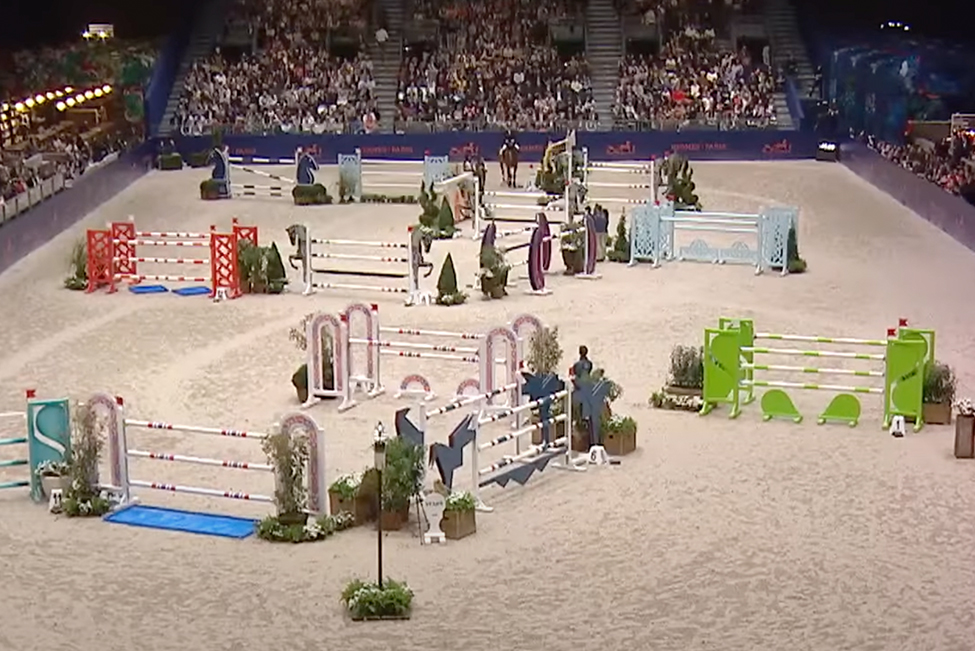

The course plan from the Saut Hermès 2019
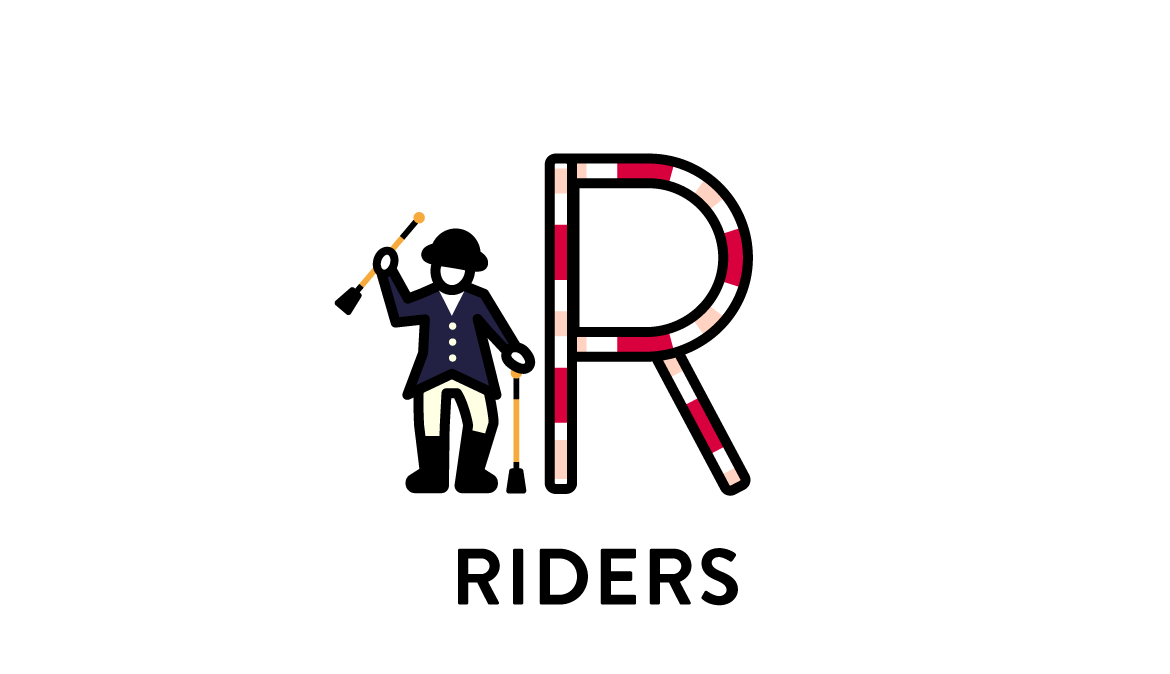
Partner riders
Some of the world’s best riders compete at Saut Hermès. Here are the Hermès partner riders participating in this year’s competition.

Guéry has been an Hermès partner rider since 2016. He collaborated with saddle craftspeople to develop Hermès’s newest saddle, the Faubourg.

Delestre began partnering with Hermès in 2011. He was born into a family of showjumpers and served as technical advisor in the development of the Hermès Cavale saddle.

Guerdat has been an Hermès partner rider since 2021. As a three-time winner of the World Cup Finals, he boasts a tried-and-true talent.

Veniss became an Hermès partner rider in 2016. He comes from an equestrian family and currently lives in Barcelona.

Maher has been an Hermès partner rider since 2023. He consistently ranks near the top of the FEI World Rankings and is known for his commanding power.
*Age and rankings as of 14 February 2024. FEI refers to the International Federation for Equestrian Sports.

Unifying horse and rider
Riders know that the quality of their equipment is key to establishing trust with their horse. Hermès saddles are made to allow horse and rider to move as one. The craftspeople meticulously apply their skill to fulfill riders’ desires, crafting sophisticated designs that are easy to ride without compromising the horse’s comfort.
Hermès produces everything a rider might need: saddles and other riding gear, such as girths, stirrup leathers, bridles, and reins; tools used in the stable, such as brushes, hoof picks, and stable wraps; and clothing for the rider.
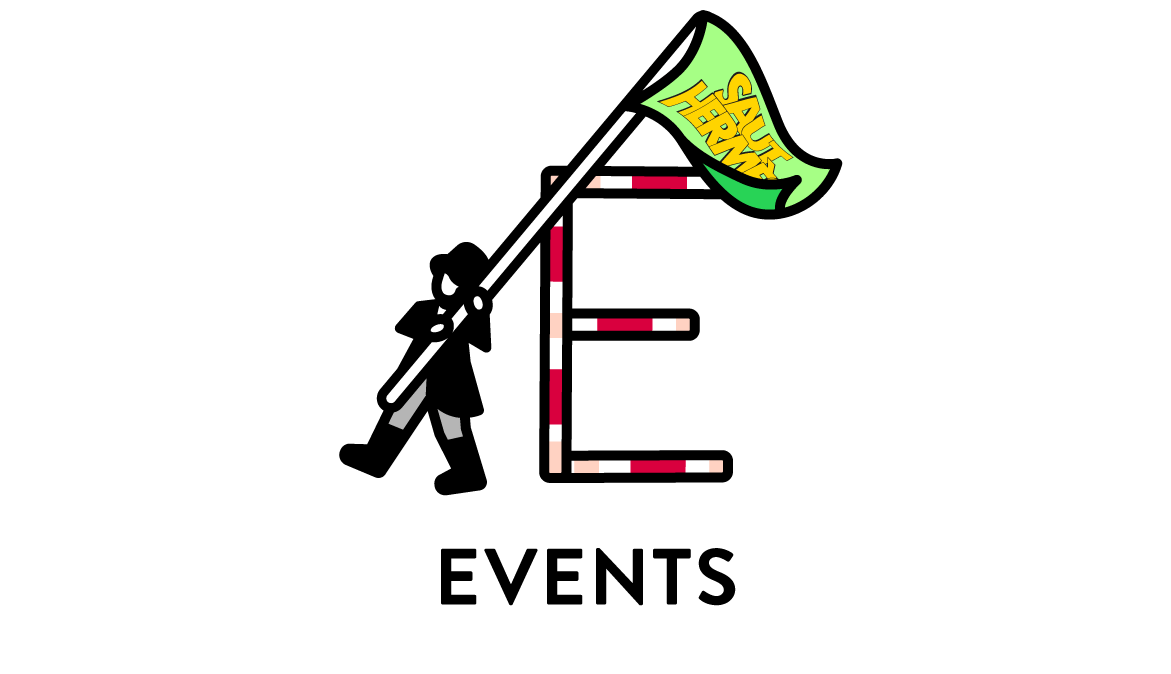
The thrill of jumping
If you visit the official Hermès Instagram account with your smartphone or tablet, you can access an AR filter that will let you enjoy the world of showjumping. Set up the filter, and you’ll get to lead a horse around the Saut Hermès course as if you were an actual rider!
※This content is no longer available.
Saut Hermès 2024, the international showjumping competition, will be held in Paris from 15th to 17th March 2024. The event brings together vast numbers of people from the equestrian world and offers visitors an array of unique experiences.

